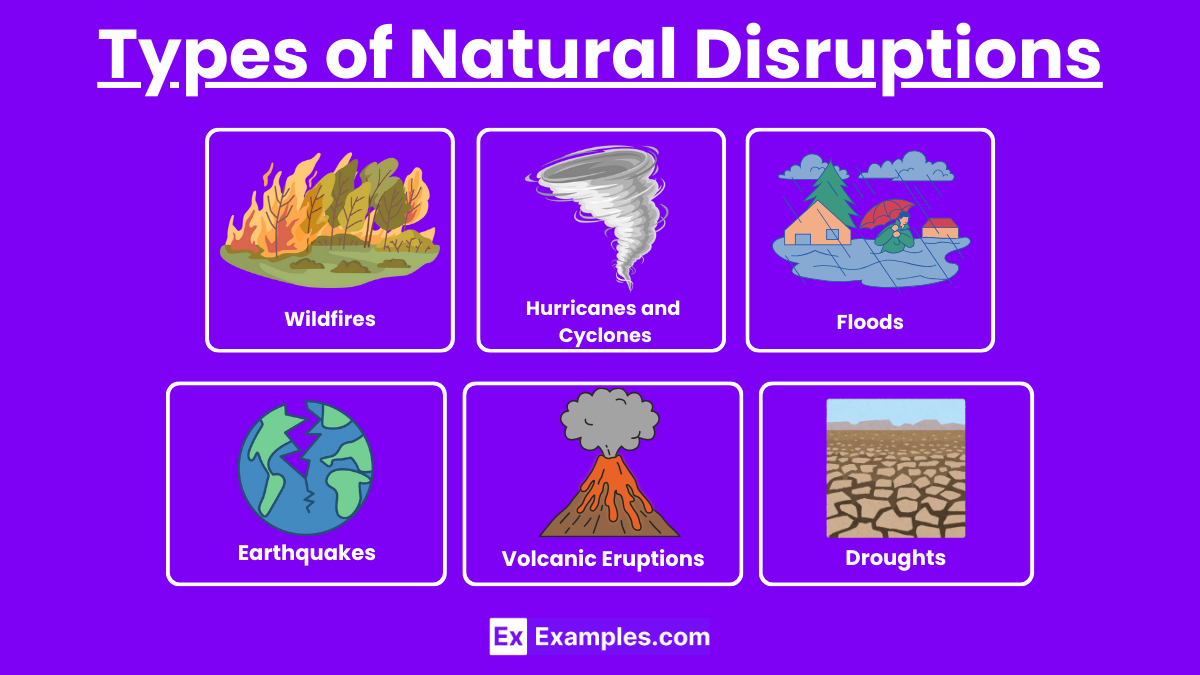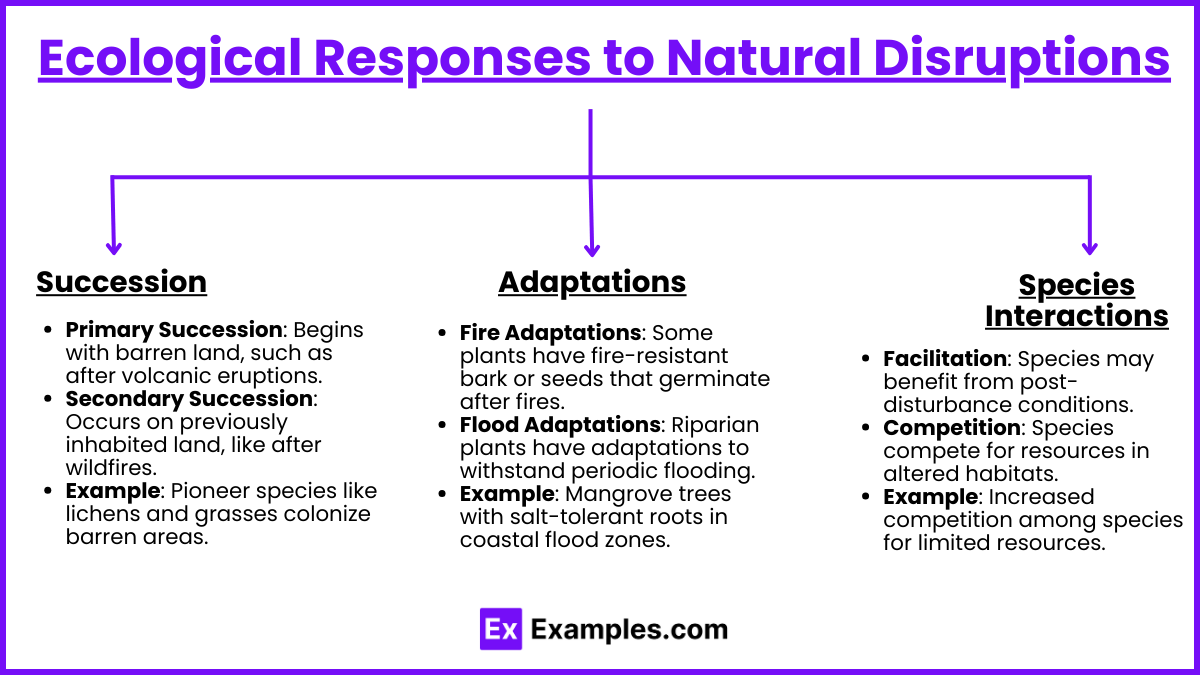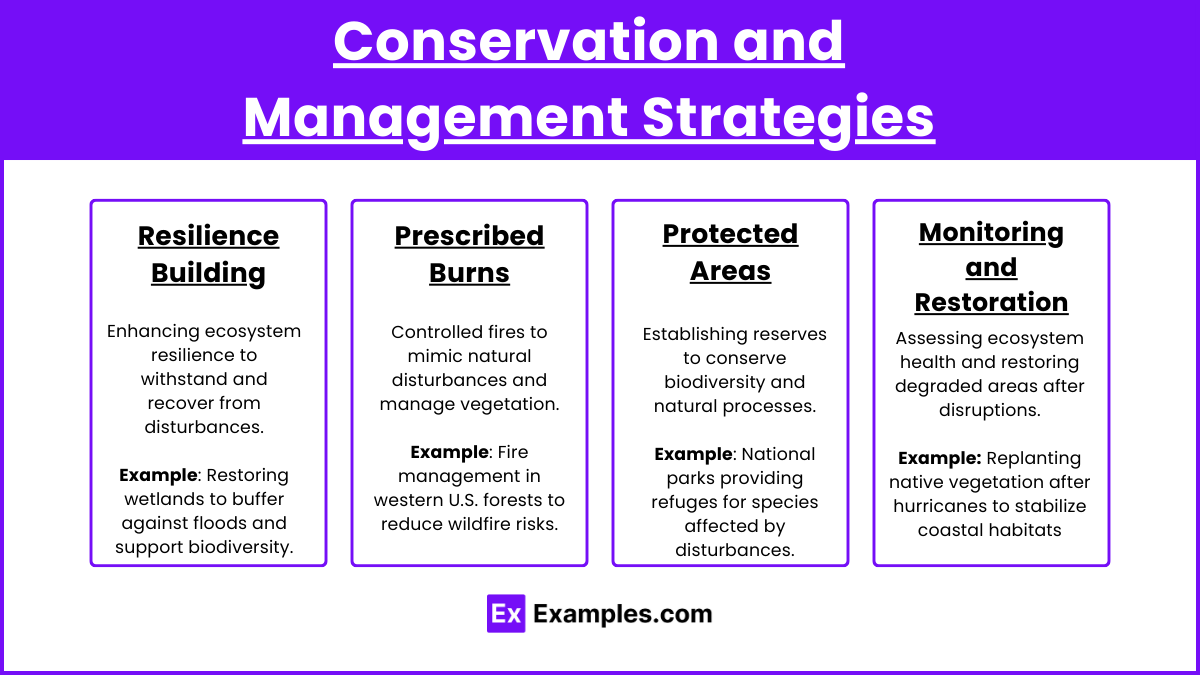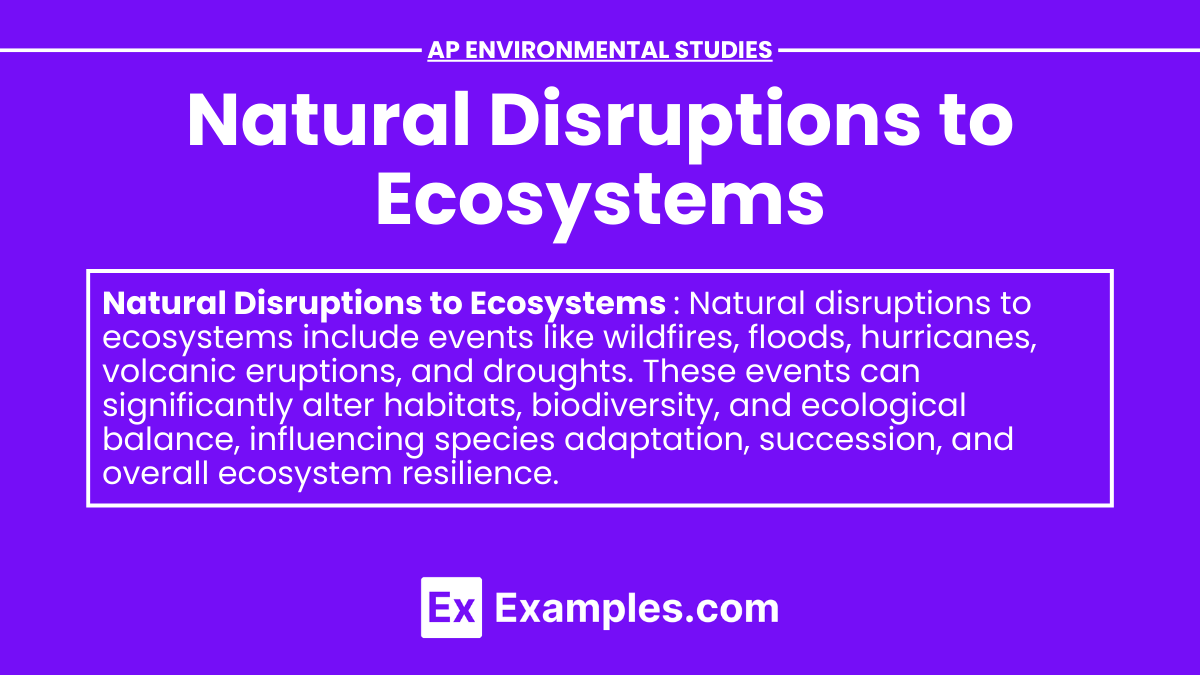Natural disruptions to ecosystems encompass the dynamic and often abrupt events that impact the structure and function of ecological systems. In the realm of ecosystem dynamics and ecology, these disruptions—such as wildfires, floods, and earthquakes-alter the composition of flora and other organisms, influencing their interactions within the broader biosphere. These events can lead to ecological succession, where new communities establish and evolve over time in response to changed environmental conditions. Understanding natural disruptions is crucial for assessing ecosystem resilience, adaptation strategies of species, and the overall stability of natural environments amidst varying degrees of disturbance.
Learning Objectives
Learning objectives for natural disruptions to ecosystems include understanding how events like wildfires, floods, and hurricanes affect organisms and mammals, altering ecosystem dynamics and climate change impacts. Students should analyze ecological responses such as succession and adaptation strategies, emphasizing resilience-building and conservation measures. They should evaluate human influences on disturbance frequency and severity, and explore case studies to comprehend management strategies like prescribed burns and habitat restoration. By studying these interactions, students will grasp the complexities of ecosystem stability and develop insights into mitigating human-induced disruptions in the context of global environmental challenges.
Definition
- Natural disruptions to ecosystems refer to disturbances caused by natural events or processes that alter ecosystem structure, composition, and function.
Types of Natural Disruptions

- Wildfires:
- Cause: Sparked by lightning or human activity, wildfires burn vegetation and impact soil.
- Impact: Clears vegetation, releases nutrients, and resets ecological succession.
- Example: Yellowstone National Park’s 1988 fires reshaped its landscape.
- Hurricanes and Cyclones:
- Cause: Intense tropical storms with strong winds and heavy rainfall.
- Impact: Uproots trees, causes flooding, and alters coastal habitats.
- Example: Hurricane Katrina’s impact on New Orleans and Gulf Coast ecosystems.
- Floods:
- Cause: Excessive rainfall or snowmelt leading to overflow of rivers or lakes.
- Impact: Displaces organisms, deposits sediments, and alters riparian habitats.
- Example: Mississippi River floods affecting floodplain ecosystems.
- Earthquakes:
- Cause: Tectonic plate movements resulting in ground shaking.
- Impact: Causes landslides, alters topography, and disrupts habitats.
- Example: 2011 Tohoku earthquake and tsunami in Japan.
- Volcanic Eruptions:
- Cause: Release of magma, ash, and gases from Earth’s crust.
- Impact: Destroys vegetation, changes soil chemistry, and creates new landforms.
- Example: Mount St. Helens eruption in 1980 reshaped its surrounding ecosystem.
- Droughts:
- Cause: Prolonged periods of reduced rainfall or water availability.
- Impact: Reduces plant growth, affects animal populations, and leads to desertification.
- Example: Sahel region in Africa experiencing recurrent droughts.
Ecological Responses to Natural Disruptions

- Succession:
- Primary Succession: Begins with barren land, such as after volcanic eruptions.
- Secondary Succession: Occurs on previously inhabited land, like after wildfires.
- Example: Pioneer species like lichens and grasses colonize barren areas.
- Adaptations:
- Fire Adaptations: Some plants have fire-resistant bark or seeds that germinate after fires.
- Flood Adaptations: Riparian plants have adaptations to withstand periodic flooding.
- Example: Mangrove trees with salt-tolerant roots in coastal flood zones.
- Species Interactions:
- Facilitation: Species may benefit from post-disturbance conditions.
- Competition: Species compete for resources in altered habitats.
- Example: Increased competition among species for limited resources.
Conservation and Management Strategies

- Resilience Building:
- Enhancing ecosystem resilience to withstand and recover from disturbances.
- Example: Restoring wetlands to buffer against floods and support biodiversity.
- Prescribed Burns:
- Controlled fires to mimic natural disturbances and manage vegetation.
- Example: Fire management in western U.S. forests to reduce wildfire risks.
- Protected Areas:
- Establishing reserves to conserve biodiversity and natural processes.
- Example: National parks providing refuges for species affected by disturbances.
- Monitoring and Restoration:
- Assessing ecosystem health and restoring degraded areas after disruptions.
- Example: Replanting native vegetation after hurricanes to stabilize coastal habitats


